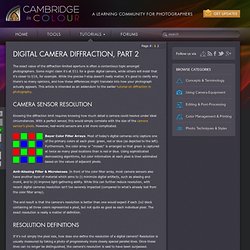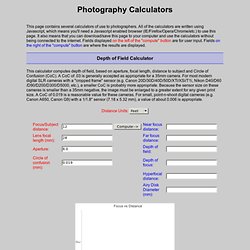

DOF. How much blur? - A visual background blur calculator. Megapixels Comparison and Maximum Print Size Charts. [46 Comments] Michael 05 Jul 2006 10:15pm "Nice guide, I got a 7 Megapixel Camera and it makes beautiful 8x10s.
Even though 7 is not on the chart it is not difficult to see where it would fit. I haven't tried anything larger than a 8x10. Daniela 17 Jul 2006 11:44am "Thanks for bringing some light into the megapixel mistery! " mike berry 07 Oct 2006 8:43pm "When you go from 8x10 to 16x20 aren't you quadrupling the area? [Reply from Robert Giordano]Strictly speaking in terms of pixels per inch, with no post editing, an 8x10 @ 300ppi is (8x300) x (10x300), or 7,200,000 pixels (7MP). Randy 07 Oct 2006 11:47pm "The critical part that is being left out which needs to be tied into this information is sensor size. [Reply from Robert Giordano]Randy, I totally agree but I'll have to make a different chart on a new page. Smartie 08 Oct 2006 1:33am [Reply from Robert Giordano]Yes, you are correct. Online Depth of Field Calculator. Digital Camera Diffraction – Resolution, Color & Micro-Contrast.
The exact value of the diffraction-limited aperture is often a contentious topic amongst photographers.

Some might claim it's at f/11 for a given digital camera, while others will insist that it's closer to f/16, for example. While the precise f-stop doesn't really matter, it's good to clarify why there's so many opinions, and how these differences might translate into how your photograph actually appears. This article is intended as an addendum to the earlier tutorial on diffraction in photography. Knowing the diffraction limit requires knowing how much detail a camera could resolve under ideal circumstances. With a perfect sensor, this would simply correlate with the size of the camera sensor's pixels. Bayer Color Filter Arrays.
Anti-Aliasing Filter & Microlenses. The end result is that the camera's resolution is better than one would expect if each 2x2 block containing all three colors represented a pixel, but not quite as good as each individual pixel. Extinction Resolution. Brenizer Method Calculation - By Brett Maxwell. Custom lens hoods. Le Posographe. Kaufmann's Posographe - a pocketable analog exposure calculator. Circles of Confusion for Digital Cameras.
Aperture Diffraction Limits - Lonestardigital.com. Apertures, Pixel Sizes, and Diffraction Limits.

Contrary to popular belief, smaller lens apertures (with their greater depth of field) don't necessarily result in sharper pictures. When the negative effects of aperture diffraction begin to outweigh the positive effects of increased depth of field, sharpness falls off and fuzziness sets in. Smaller apertures also cause slower shutter speeds, often requiring higher ISO settings to make a shot. Understanding how aperture diffraction works and relating how diffraction applies to your camera will help you to take sharper pictures.
Cambridge in Colour has an outstanding tutorial & essay about diffraction limited photography. Below: A representation of Cambridge in Colour's interactive visual diffraction table. This will all make more sense when you go to the tutorial, read the article, and try out the real interactive table for yourself. Hover your mouse pointer over the camera of choice (hover, don't click). Online Depth of Field Calculator. Digital Camera Sensor Sizes: How it Influences Your Photography. This article aims to address the question: how does your digital camera's sensor size influence different types of photography?

Your choice of sensor size is analogous to choosing between 35 mm, medium format and large format film cameras — with a few notable differences unique to digital technology. Much confusion often arises on this topic because there are both so many different size options, and so many trade-offs relating to depth of field, image noise, diffraction, cost and size/weight. Background reading on this topic can be found in the tutorial on digital camera sensors. Sensor sizes currently have many possibilities, depending on their use, price point and desired portability. The relative size for many of these is shown below: Canon's 1Ds/5D and Nikon D3 series are the most common full frame sensors. Www.tawbaware.com/maxlyons/calc.htm. This page contains several calculators of use to photographers.

All of the calculators are written using Javascript, which means you'll need a Javascript enabled browser (IE/Firefox/Opera/Chrome/etc.) to use this page. It also means that you can download/save this page to your computer and use the calculators without being connected to the internet. Fields displayed on the left of the "compute" button are for user input. Fields on the right of the "compute" button are where the results are displayed. This calculator computes depth of field, based on aperture, focal length, distance to subject and Circle of Confusion (CoC). This calculator computes the degree of parallax error that occurs when a camera is rotated around a point that isn't the nodal point. This calculator computes the angular field of view for a lens of a specified focal length on a 35mm camera. This calculator also computes the maximum number of megapixels that the sensor can contain before becoming diffraction limited.